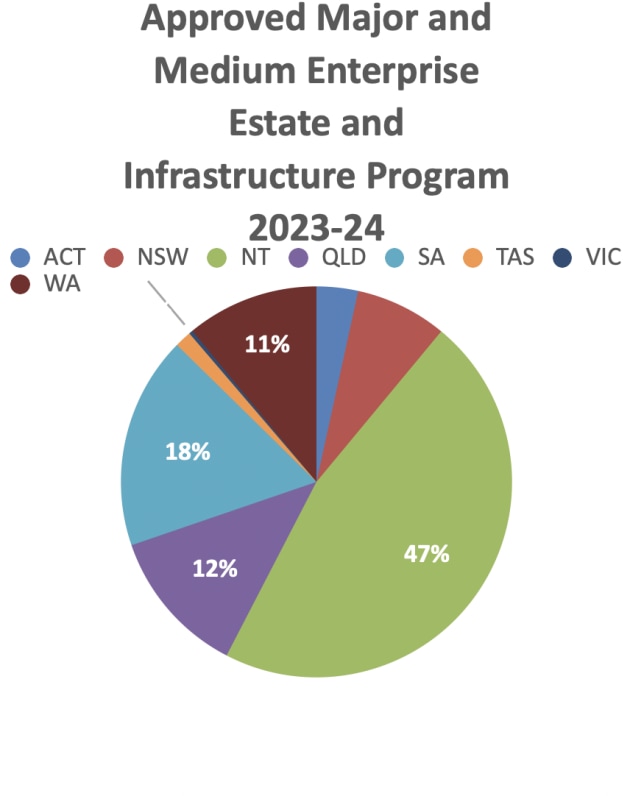As the government and Defence prepare for the May budget, some information about Defence Estate spending has come to light.
Defence funding for the 2023-24 financial year exceeded $50 billion for the first time, and from the data provided in the Budget for the Defence Portfolio, almost 5 per cent of the total budget was allocated to estate spending.

According to Defence, the ‘total security and estate 2023-24 budget’ was $6.9 billion, with $2.4 billion allocated to major infrastructure projects. This aligns with the ‘expenditure of approved major and medium Enterprise Estate and Infrastructure Program projects for 2023-24’ provided in the Defence Portfolio, which came to $2,396.9 million.
The 2023-24 budget openly stated that it represents the program before the Defence Strategic Review (DSR) was delivered, meaning that the 2024-25 budget will involve an amount of shuffling around to free up the funding necessary to cover the DSR and other priorities over the forward estimates, and will likely have to cut into approved projects already in contract and acquisition.
A state-by-state comparison of the data gathered from the Defence Portfolio shows that almost half of the estate expenditure goes towards the Northern Territory, with Victoria’s spending cut to almost nothing.
The largest project by far was the ‘RAAF Base Tindal Redevelopment Stage 6 and United States Force Posture Initiative (USFPI) Airfield Works and Associated Infrastructure’, clocking in at $317.5 million for the 2023-24 period.
The USFPI arrangement, under which significant US investment in infrastructure and training areas has followed the annual rotation of US Marine Corps personnel during the dry season, means that the actual amount being spent on this project is higher, partially funded by the US.
To upgrade ageing base infrastructure and support access for an increased rotational presence of US forces, Defence’s Tindal Redevelopment Stage 6 and Enhanced Air Cooperation (EAC) work are being combined to deliver a program of works scheduled for completion in late 2027.

The DSR emphasised the importance of Defence’s northern bases, so it remains to be seen whether the 2024-25 budget will result in an expedited schedule and allocation of further funds.
Last year, the government commissioned an enterprise-wide audit in response to the recommendations of the Defence Strategic Review, which considered “a range of estate related matters to ensure the Defence Estate is best positioned to support our operational and capability requirements.”
Although the audit was delivered in December 2023, it is not known when the results will be released to the public, with Defence stating that the government “will take the necessary time to review and consider the findings of the independent audit”.
Industry anxiously awaits the promised National Defence Strategy and Integrated Investment Program to get a clearer view of what effect the DSR will actually have on Defence’s current and future programs, together with the impact of the audit on Defence’s estate spending.




